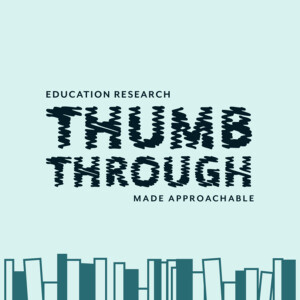
How Students Make Sense of Wordless Picture Books
 2019-04-22
2019-04-22
Summary and review of:
Lubis. (2018). The progress of students reading comprehension through wordless picture books.
Advances in Language and Literary Studies, 9(1), 48-52.
https://files.eric.ed.gov/fulltext/EJ1166954.pdf
Transcript:
The research described in this article was conducted to study the various “sense-making” strategies of a six-year-old interpreting the contents of wordless picture books. Such books are a unique medium. The entire story must be expressed via illustration. This often leaves details, like dialogue, the thoughts and intentions of characters, and the relationships between events to be imagined or discovered by the reader. Such a process brings the reader’s understanding of the world into play in a way other books usually do not.
The qualitative data of this research was systematically reviewed, and carefully analyzed/categorized. Interpretation of visual cues and “sense making” of wordless stories is broken down into categories such as “Sense-Making through Active, Playful Behaviors” and “Sense-Making through Intertextuality.” Bias in the data collection is unlikely, but the choice of specific books for the research is a subjective decision. This research was published in the peer-reviewed journal Advances in Language and Literary Studies.
I was surprised at the use of intertextual thinking by the participants. Explicitly connecting one text to another, thinking dialectically, is often reserved for higher education or at least high school level literature classes. It was fascinating to see this happen naturally, and to be reminded that, when exposed to multiple stories within a short period of time, it is a process that needs no blatant encouragement.
--- Support this podcast: https://podcasters.spotify.com/pod/show/thumbthrough/supportMore Episodes
 2020-06-25
2020-06-25
 2020-06-06
2020-06-06
 2020-01-20
2020-01-20
 2019-12-31
2019-12-31
 2019-12-19
2019-12-19
 2019-11-11
2019-11-11
 2019-11-05
2019-11-05
Create your
podcast in
minutes
- Full-featured podcast site
- Unlimited storage and bandwidth
- Comprehensive podcast stats
- Distribute to Apple Podcasts, Spotify, and more
- Make money with your podcast
It is Free
- Privacy Policy
- Cookie Policy
- Terms of Use
- Consent Preferences
- Copyright © 2015-2024 Podbean.com




